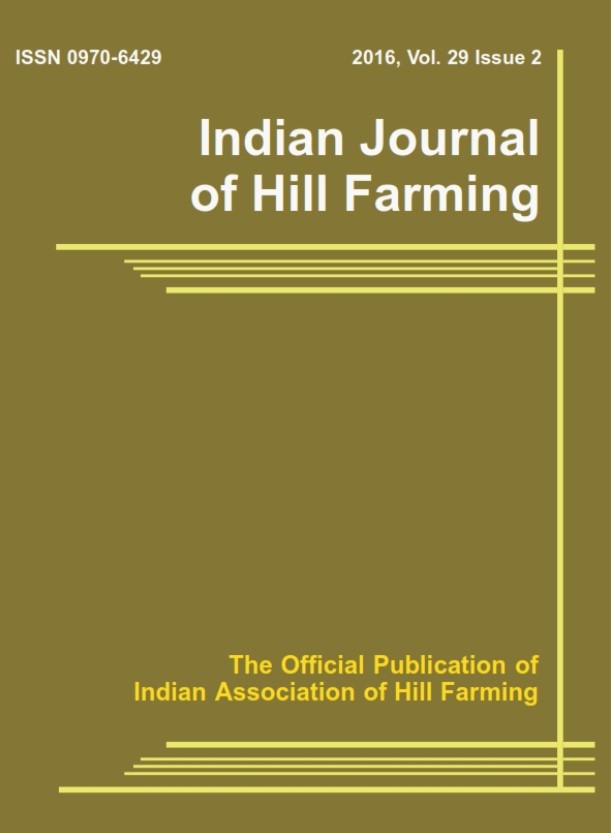Monitoring Soil pH and Exchangeable Ca Status in Groundnut–Rapeseed Cropping System as Influenced by Direct and Residual Effect of Micronutrients and Liming
DOI:
https://doi.org/10.56678/Keywords:
Soil acidity, Exchangeable Ca, nutrient status, liming, micronutrient, oilseed cropsAbstract
Soil acidity associated problems are the major bottleneck in realizing yield potential of most of the crops in north eastern hill region. The field experiment was conducted in ICAR Research complex for North Eastern Hill (NEH) Region, Umiam, Meghalaya (980 m above mean sea level) in groundnut with six micronutrient treatments viz. control (no micronutrient), Zn @ 5 kg/ha, B @ 1 kg/ha, Mo @ 0.5 kg/ha, Zn + Mo, Zn + B + Mo (all the micronutrients were applied through soil application) and two acid soil amendment practices viz. lime @ 500 kg/ha (furrow application) and no lime application. The residual effect of treatments applied to groundnut were assessed on soils under succeeding rapeseed. The objectives were to monitor the soil pH and exchangeable Ca during the crop growth period at 15 days interval as influenced by direct and residual effect of micronutrient application and liming. At 0-15 and 15-30 cm soil depth, soil pH remained non-significant due to either sole or combined application of micronutrients, whereas, application of lime significantly influenced soil pH at both the soil depth than no lime application in different growing stages of groundnut. Soil pH status at different growing stages of rapeseed did not vary significantly due to residual effect of micronutrients, whereas, residual effect of liming increased soil pH of rapeseed crop significantly at all the growing stages of succeeding rapeseed in 0-15 cm and 15-30 cm of soil layers. At different growing stages of groundnut, soil exchangeable Ca did not vary significantly due to sole or combined application of micronutrients at 0-15 and 15-30 cm soil depth, whereas, application of lime significantly improved exchangeable Ca at both soil depth over no lime application. Residual effect of lime increased soil exchangeable Ca significantly in both the soil depth at different growing stages of rapeseed crop. Thus, liming increased soil pH and exchangeable Ca with direct effect in groundnut and residual effect in succeeding rapeseed crop in acid soils of NEH Region.
Downloads
Published
Issue
Section
License

This work is licensed under a Creative Commons Attribution-NonCommercial-NoDerivatives 4.0 International License.




